In This Issue
- 40% of Cloud Market
- GE and Apple Partner
- AT&T Enterprise IoT
- Report from the CEO
- 5 Cloud Trends 2018
- AI Transforms Market
- Data Center Strategies
- Squaring Hybrid Cloud
- Edge Infrastructure
- Hyperconvergence
- FASB Addresses Issue
- House Cyber Measure
- Complacency Problem
- WiFi Nets Vulnerable
- DHS Bolsters Agency
- Target Smart Devices
- Coming DCIA Events
Amazon Now 40 Percent of Cloud Market
Excerpted from NewsMax Report by Scott Rasmussen
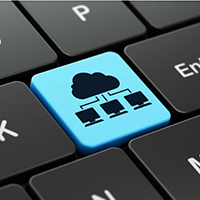 The cloud computing market generates $28 billion annually, and 40 percent of that revenue goes to Amazon Web Services (AWS).
The cloud computing market generates $28 billion annually, and 40 percent of that revenue goes to Amazon Web Services (AWS).
The next three largest providers – Microsoft, Google, and IBM – account for a combined total of 23 percent.
The next 10 providers account for 18 percent of the market, leaving 18 percent for everybody else.
Given this dominance, it’s not surprising that Amazon may have surpassed Google as the most feared corporate competitor.
Amazon has been mentioned in 2,090 corporate conference calls with investors this year compared to 1,503 for Google.
In 2016, the two companies were essentially even.
Prior to last year, Google had led Amazon for over a decade.
Some in the political world are unhappy with tech giants like Amazon and Google and want to see them more tightly regulated… Read More
GE and Apple Partner on IIoT Platform
Excerpted from MarketWatch Report by Tom Kilgore
 General Electric (GE) and Apple announced Wednesday a partnership aimed at bringing GE’s industrial internet of things (IIoT) platform Predix to Apple’s iPhones and iPads.
General Electric (GE) and Apple announced Wednesday a partnership aimed at bringing GE’s industrial internet of things (IIoT) platform Predix to Apple’s iPhones and iPads.
The companies will provide developers a new software development kit to make industrial IoT apps for Apple’s operating system iOS.
As part of the partnership, GE will standardize on iPhone and iPad for mobile devices, and promote Mac as a choice for its global workforce, while Apple will promote Predix as the industrial IoT analytics platform of choice for its customers and developers.
“GE is an ideal partner with a rich history of innovation across the industrial world in areas like aviation, manufacturing, healthcare and energy,” said Tim Cook, Apple’s CEO.
“Together, Apple and GE are fundamentally changing how the industrial world works by combining GE’s Predix platform with the power and simplicity of iPhone and iPad.”
“Working together, GE and Apple are giving industrial companies access to powerful apps that help them tap into the predictive data… Read More
AT&T Is Going for Enterprise IoT
Excerpted from Market Realist Report by Rachel Gunter
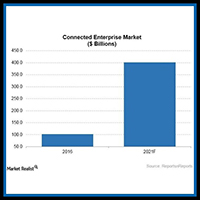 While AT&T’s internet of things (IoT) collaboration with luggage company TUMI is aimed at the consumer market, AT&T is also actively pursuing the billions of revenue dollars in the connected enterprise market.
While AT&T’s internet of things (IoT) collaboration with luggage company TUMI is aimed at the consumer market, AT&T is also actively pursuing the billions of revenue dollars in the connected enterprise market.
Working in collaboration with Microsoft, AT&T has built an IoT management platform for the enterprise market.
The platform, called Operations Center, is based on Microsoft’s Azure cloud and is designed to simplify the way businesses track and monitor IoT assets. AT&T’s enterprise IoT platform will be available for customer testing beginning later this year.
In another enterprise IoT push, AT&T has partnered with bike-sharing platform Mobike to provide connectivity for its connected bikes.
Mobike has mostly operated in China and Europe, but it is expanding its dockless bike-sharing service into the United States.
According to research company ReportsnReports, the connected enterprise market will be worth $400.9 billion by 2021, compared with $102.6 billion in 2016, as illustrated in the chart above… Read More
Report from DCIA CEO Marty Lafferty

The DCIA is pleased to announce an extension and deepening of our strategic alliance with the we.CONECT Group for 2018 centering on its “Industry of Things” global franchise.
Since 2014, we.CONECT has grown to become a major player in private sector information, business-to-business (B2B) digital media, and trade event management.
Its customers range from global market leaders to medium-sized enterprises to rising-star new players in Europe, Asia, and the USA.
We.CONECT’s core mission is to deliver high-quality, practice-oriented, timely, relevant, and forward-looking information to help its customers become more effective and successful in their daily work.
Our partnership with we.CONECT will focus on four marquee events in 2018: Industry of Things World USA 2018, Security of Things World 2018, Industry of Things World Asia 2018, and Industry of Things World 2018.
For planning purposes, the first of these, Industry of Things World USA, which will provide attendees with a deep business and technical understanding of the industrial internet landscape, will take place at the Hilton San Diego Resort & Spa in San Diego, CA from March 7th through 9th.
Security of Things World 2018 is scheduled for July 2nd and 3rd at the Maritim proArte in Berlin, Germany.
Industry of Things World Asia 2018 will take place on July 16th and 17th at the Marina Bay Sands Congress Center in Singapore.
And finally, Industry of Things World 2018 will follow from September 23rd through 25th at the Berlin Congress Center.
We hope to see you at one or more of these valuable and stimulating events.
Please contact us at info@dcia.info for speaking and sponsoring information, Share wisely, and take care.
Five Cloud Trends for 2018
Excerpted from NetworkWorld Report by Marty Puranik
 As we enter the last quarter of 2017, business and IT executives are turning more of their attention to how they can use technology to accomplish their 2018 business objectives.
As we enter the last quarter of 2017, business and IT executives are turning more of their attention to how they can use technology to accomplish their 2018 business objectives.
We’ve compiled a list of five trends in cloud computing that strategic businesses will prepare for in the coming year.
1. Exponential growth in cloud services solutions.
Software as a service (SaaS) opened a flexible and financially attractive door for businesses and consumers to try early cloud services.
The growth of infrastructure and platform as a service (Iaas and PaaS, respectively) has expanded the number of cloud solutions available in the public and private sectors.
In 2018, we expect to see many more organizations take advantage of the simplicity and high-performance the cloud guarantees.
According to a forward-looking 2016 survey on cloud services from Cisco, these solutions will continue to be deployed… Read More
AI to Transform Cloud Market
Excerpted from The Stack Report by Nicky Cappella
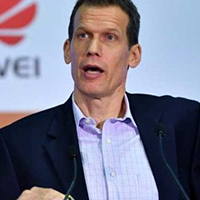 Artificial intelligence (AI) will have a transformative effect on the cloud market over the next decade, according to the Asia Cloud Computing Association (ACCA).
Artificial intelligence (AI) will have a transformative effect on the cloud market over the next decade, according to the Asia Cloud Computing Association (ACCA).
ACCA Chairman Bernie Trudel gave a speech about the future of cloud markets at the Cloud Expo Asia conference in Singapore.
He noted that the market for cloud-based AI is small, accounting for only 1% of the global cloud computing market.
However, it is growing quickly, at a rate of 52% year over year and is expected to grow to 10% of the total cloud market by 2025.
The major cloud suppliers do offer some services in cloud-based AI.
Amazon Web Services (AWS) offers infrastructure tools, API services, and machine learning platforms as add-ons to cloud service offerings.
Additionally, Amazon has helped to transform smart home and consumer electronics with advances in AI applied to Alexa and Echo… Read More
Cloud Software Data Center Strategies
Excerpted from CloudTech Report by Josh Epstein
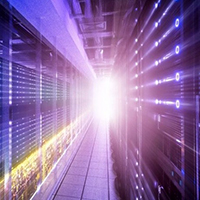 The rapid advancement of cloud-scale software is driving the digital transformation impacting nearly every facet of our life.
The rapid advancement of cloud-scale software is driving the digital transformation impacting nearly every facet of our life.
The ways we work, communicate, navigate, travel, shop, manage our money, access healthcare, interact with things and places are extremely different from only five years ago.
There are many underlying technologies that enable this transformation – but none as profound as the rise of cloud-based software applications that we interact with throughout our day.
IDC notes that cloud software accounts for nearly one-third of the $400+ billion as a service offerings; eCommerce sites; fintech and health tech apps.
It includes emerging segments including IoT-enabled applications and AI-enabled lifestyle applications like autonomous vehicles and smart homes.
Data center strategies for cloud software are different than those that support traditional software applications.
Whether hosted in public IaaS or in a private cloud, it is important to recognize it requires several characteristics… Read More
Squaring the Hybrid Cloud Circle
Excerpted from TechCloud Report from Simon Beame
 There is clearly a growing need and place for both public and private clouds.
There is clearly a growing need and place for both public and private clouds.
But users are increasingly looking for solutions that give them the best of all worlds by seamlessly interconnecting the two together into hybrid solutions.
In addition, many organizations need to encompass legacy IT systems so that they operate as seamlessly as possible alongside the hybrid cloud environment.
It’s a tall order.
However, there are already clear signs that such transformative solutions are making the step from concept to reality.
For one, some of the major public cloud providers are stepping up to make the development and deployment of hybrid solutions more straightforward.
The newly launched Microsoft Azure Stack, for example, is intended to allow organizations to run Azure IaaS and PaaS services directly within their own data centers, whether in-house or in their chosen collocation facility… Read More
Edge Computing for Infrastructure
Excerpted by Gartner Report by Rob van der Meulen
 Edge computing promises near real-time insights and facilitates localized actions.
Edge computing promises near real-time insights and facilitates localized actions.
Many digital business projects create data that can be processed more efficiently when the computing power is close to the thing or person generating it.
Edge computing solutions address this need for localized computing power.
IT infrastructure and operations (I&O) leaders tasked with managing these solutions should understand the associated business value and risks.
“Currently, around 10% of enterprise-generated data is created and processed outside a traditional centralized data center or cloud. By 2022, Gartner predicts this figure will reach 50%.”
Gartner defines edge computing as solutions that facilitate data processing at or near the source of data generation.
For example, in the context of the internet of things (IoT), the sources of data generation are usually things with sensors or embedded devices. Edge computing serves as the decentralized extension… Read More
Hyperconvergence Data Center Strategy
Excerpted from CloudTech Report by Graham Jarvis
 Vendors often like to create a new name for an existing piece of technology that is essentially made up of the same components and fulfills the same functions.
Vendors often like to create a new name for an existing piece of technology that is essentially made up of the same components and fulfills the same functions.
This is because of factors such as the competitive pressure to keep customers interested: application service provision is more commonly known today as the cloud, while converged infrastructure has led to hyperconverged infrastructure.
Sometimes there are actual technological differences between products, but this isn’t always the case.
That’s because once a technology has reached its peak, the market could potentially drop off its perch. Vendors’ claims – and even media reports – should therefore be treated with a pinch of salt and some careful scrutiny.
For example, DABCC magazine highlighted: “Cloud is becoming a key plank in virtually every organization’s technology strategy.”
“The potential benefits are now widely understood, among them the ability to save money and reduce IT management overheads, meaning more resources can be plowed into other parts of your business.”
The article, ‘Why Data Center Hyperconvergence is Key to Your Cloud Strategy,’ points out that moving to the cloud… Read More
FASB Addresses Cloud Accounting Issue
Excerpted from Cherry Bekaert Report
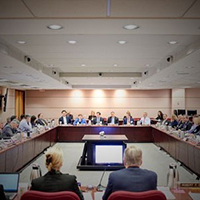 The Financial Accounting Standards Board’s (“FASB”) Emerging Issues Task Force (“EITF”) has resolved a longstanding accounting issue concerning the costs for setting up various types of cloud-managed business services.
The Financial Accounting Standards Board’s (“FASB”) Emerging Issues Task Force (“EITF”) has resolved a longstanding accounting issue concerning the costs for setting up various types of cloud-managed business services.
During its October 12 meeting, the EITF affirmed that customers of cloud computing arrangements must account for them similarly to a software license for a large business application with Subtopic 350-40, Intangibles-Goodwill and Other-Internal-Use Software.
Last week’s decision could lead to an accounting change to US Generally Accepted Accounting Principles (GAAP).
If so, the final amendment will allow companies to capitalize more costs related to installing cloud services such as employee training and creating interfaces to other systems.
Capitalizing the costs would help businesses disclose them as a long-term asset, as well as amortize them during the span of the software contract.
Before officially recommending the change, task force members seek additional research… Read More
House Measure to Prevent Cyberattacks
Excerpted from Financial Regulation News Report by Dave Kovaleski
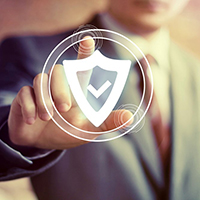 Legislation that directs the Securities and Exchange Commission (SEC) to accelerate cybersecurity risk controls to prevent future hacker attacks was advanced by the House Financial Services Committee last week.
Legislation that directs the Securities and Exchange Commission (SEC) to accelerate cybersecurity risk controls to prevent future hacker attacks was advanced by the House Financial Services Committee last week.
The Market Data Protection Act (H.R. 3973), sponsored by Congressman Warren Davidson (R-OH), was approved 59 to one and now moves to the full House for a vote.
The Government Accountability Office (GAO) reports that deficiencies in the SEC computing environment may jeopardize the confidentiality, integrity, and availability of information residing in and processed by its systems.
The Market Data Protection Act addresses these deficiencies by requiring the SEC to develop internal risk controls and freeze reporting to the Consolidated Audit Trail (CAT) until proper protections are in place to secure personal information.
“We need to make sure our house is in order at the SEC,” Davidson said.
“We know there are serious flaws in the way the SEC maintains its data, and in the ways they respond to and communicate errors and omissions… Read More
Complacency Biggest Cyber Challenge
Excerpted from Pace Today Report by Mike Wheeler
 It’s been a hard slog, but everything’s gone to plan.
It’s been a hard slog, but everything’s gone to plan.
Your plant is up and running. Automated systems are humming along nicely. The hardware and software are configured, spewing out data left, right and center.
Orders are coming in. Client fulfillments are being met. They’re happy. You’re happy. Then bang.
Everything grinds to a halt.
Conveyor belts stop, goods are backed up on production lines, the loading bay lies empty.
This is the real threat for companies who have embraced the industrial internet of things (IIoT) in their automated processes.
The IIoT brings many great things to the table.
It gets devices talking – sharing information, sending and receiving data, allows actuators and sensors to compare notes – a plethora of functions designed to make modern plants functional and streamlined… Read More
All WiFi Networks Vulnerable to Hacking
Excerpted from The Guardian Report by Alex Hern
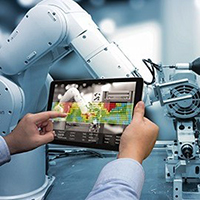 The security protocol used to protect the vast majority of wifi connections has been broken, potentially exposing wireless internet traffic to malicious eavesdroppers and attacks, according to the researcher who discovered the weakness.
The security protocol used to protect the vast majority of wifi connections has been broken, potentially exposing wireless internet traffic to malicious eavesdroppers and attacks, according to the researcher who discovered the weakness.
Mathy Vanhoef, a security expert at Belgian university KU Leuven, discovered the weakness in the wireless security protocol WPA2, and published details of the flaw on Monday morning.
“Attackers can use this novel attack technique to read information that was previously assumed to be safely encrypted,” Vanhoef’s report said.
“This can be abused to steal sensitive information such as credit card numbers, passwords, chat messages, emails, photos and so on.
Vanhoef emphasized that “the attack works against all modern protected wifi networks.”
“Depending on the network configuration, it is also possible to inject and manipulate data. For example, an attacker might be able to inject ransomware or other malware into websites… Read More
DHS Bolsters Agency Cybersecurity
Excerpted from Report by Alison Rayome
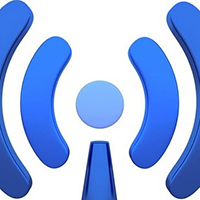 On Monday, the US Department of Homeland Security (DHS) announced a new requirement for federal agencies to employ web and email encryption to boost cybersecurity protections.
On Monday, the US Department of Homeland Security (DHS) announced a new requirement for federal agencies to employ web and email encryption to boost cybersecurity protections.
At a cybersecurity roundtable hosted by the Global Cyber Alliance, Jeanette Manfra, Assistant Secretary for the Office of Cybersecurity and Communications at the DHS, issued a Binding Operational Directive (BOD) for these federal agencies to implement these cyber policies.
Within 90 days, all federal agencies must deploy the email security protocol Domain-based Message Authentication, Reporting & Conformance (DMARC).
This will help prevent spam and phishing attackers from using federal agency email domains to conduct their attacks.
Organizations using DMARC receive less than a quarter of the threats received by those that do not use the technology, according to a report from security firm GreatHorn.
And within 120 days, all federal agencies must employ Hypertext Transfer Protocol Secure (HTTPS) for all websites to ensure safer connections for citizens, and use other encryption protocols such as STARTTLS… Read More
Hackers Increasingly Target Smart Devices
Excerpted from Consumer Affairs Report by Mark Huffman
 Credit monitoring service Lifelock said its business soared in the days after the Equifax breach was disclosed, and prudent computer users have made sure their antivirus software is up to date.
Credit monitoring service Lifelock said its business soared in the days after the Equifax breach was disclosed, and prudent computer users have made sure their antivirus software is up to date.
However, a new study from ReportLinker finds that only a small majority (54 percent) of consumers still feel safe when they are connected to the internet.
The findings show that 82 percent of people are more concerned about cyberattacks now than they were five years ago.
When it comes to their personal devices, 59 percent of consumers think their PCs, either a desktop of laptop, is their weakest link in the security chain.
Twenty-five percent cited a smartphone as their weakest link, while only nine percent worried that smart devices were undermining their security.
But despite the numbers, it is smart devices — the so-called internet of things (IoT) — that keep security experts up at night. A year ago, hackers exploited the nearly non-existent security on many smart devices found in homes… Read More
Coming Events of Interest
Mobility Unmanned — November 1st and 2nd in Washington, DC. Providing key stakeholders the unique opportunity to explore cutting-edge autonomous technology and examine the emerging regulatory landscape governing the commercial use of unmanned vehicles in all sectors – air, land, and sea.
Industrial Internet of Things (IoT) Europe — November 7th and 8th in Munich, Germany. IoT Europe will bring together forward-thinking companies from the manufacturing, energy, and transportation sectors to pave the way for the Industrial IoT revolution.
Government Video Expo & National Drone Show — November 28th-30th in Washington, DC. The 22nd annual GVE will feature a full exhibit floor with numerous training options, free seminars, keynotes, networking opportunities, and five new educational pavilions.
CES — January 9th through 12th in Las Vegas, NV. Organized by the Consumer Technology Association, this large annual event typically hosts presentations of new products and technologies in the consumer electronics industry.
Industry of Things World USA 2018 — March 7th through 9th in San Diego, CA will bring together the entire industrial internet of things (IIoT) ecosystem for this third annual event featuring three days of high level networking and learning.
Delivery of Things World 2018 — April 23rd and 24th in Berlin, Germany. Meet the most influential DevOps practitioners and experts and discuss what DevOps means for your business.
